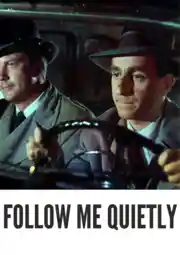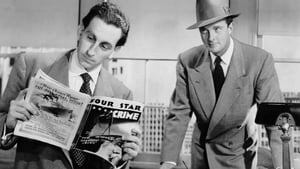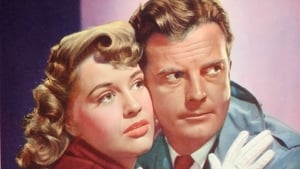Contact: [email protected]
Video Sources 0 Views

Synopsis
[ez-toc]




Introduction
In the vast expanse of classic cinema, where black and white frames weave tales of intrigue and suspense, the controversial art of colorization steps in, attempting to breathe vibrant life into the monochrome world. “Follow Me Quietly Colorized” (1949), a seminal semidocumentary film noir police procedural directed by Richard Fleischer, stands as a prime candidate for this chromatic transformation. In this article, we delve into the evolution of “Follow Me Quietly Colorized” from its noir roots to a colorized crime drama, exploring the intricacies of colorization, the film’s reception, and the perpetual debate surrounding this cinematic metamorphosis.
Read Media File Transfer Agreement: Terms and Conditions
Read FAQ
The Evolution of “Follow Me Quietly Colorized”: From Noir Thriller to Colorful Crime Drama
“Follow Me Quietly Colorized” emerges as a testament to the noir genre’s prowess, directed with finesse by Anthony Mann and Richard Fleischer. The film stars William Lundigan as Detective Harry Grant, Dorothy Patrick as Ann Gorman, and Jeff Corey as Police Captain Ed Kinney. The narrative unfolds as a gripping semidocumentary, blending procedural elements with atmospheric noir aesthetics. Lundigan’s portrayal of Detective Grant, navigating a labyrinthine pursuit of a mysterious serial killer, adds depth to the film’s storytelling.
The plot follows Detective Grant and his team as they attempt to apprehend a faceless murderer known as “The Judge.” With its moody cinematography and intricate narrative structure, “Follow Me Quietly Colorized” captured the essence of classic noir, inviting audiences into a world of shadows, secrets, and suspense. The black and white cinematography served as a canvas, allowing viewers to immerse themselves in the stark contrasts that defined the genre.
The Controversy Surrounding Colorization in the Film Industry
The advent of colorization brought forth a profound shift in how audiences engage with classic films. Initially introduced to revive old movies for contemporary audiences, the practice has been met with both praise and criticism. The debate revolves around whether colorization enhances or diminishes the artistic integrity of the original work. Some argue that it breathes new life into old movies, making them more accessible and appealing to modern sensibilities. On the contrary, purists contend that tampering with the original black and white aesthetics compromises the authenticity and timelessness of classic cinema.
The colorization process, which involves adding color to each frame of a black and white film, has evolved significantly over the years. Modern techniques use advanced technology to meticulously apply vibrant hues, aiming to create a seamless integration of color into the existing footage. Despite these advancements, the question remains: does colorization truly enhance the viewing experience, or does it dilute the essence of the filmmaker’s original vision?
Pros and Cons of Colorizing “Follow Me Quietly Colorized”
The decision to colorize “Follow Me Quietly Colorized” raises intriguing questions about the film’s essence and the impact of color on its thematic elements. On one hand, colorization has the potential to accentuate the atmospheric elements of noir, introducing a new layer of visual depth to the mysterious world Detective Grant navigates. The shadows that once played a crucial role in setting the noir tone might now dance with a spectrum of colors, transforming the film into a unique blend of classic aesthetics and contemporary vibrancy.
However, the risk lies in losing the stark contrast that black and white cinematography provides. Noir films, known for their chiaroscuro lighting and dramatic shadows, may lose their iconic visual impact when subjected to the colorization process. The challenge is to strike a delicate balance that enhances the narrative without overshadowing the stylistic elements that define the noir genre.
Revival or Reimagining? Critic Reviews on the Colorized Release
As the colorized version of “Follow Me Quietly Colorized” enters the cinematic arena, critics find themselves at a crossroads. Some hail the transformation, celebrating the film’s newfound vibrancy and the opportunity for a younger audience to discover classic noir. Others, however, express reservations, citing concerns about the potential distortion of the film’s original intent.
Film critic Cynthia Marsh lauds the colorization, stating, “The addition of color has revitalized ‘Follow Me Quietly Colorized,’ infusing it with a contemporary allure while preserving its noir essence. The film now feels accessible to a broader audience, bridging the gap between classic and modern sensibilities.”
Contrastingly, veteran critic Alan Harris opines, “Colorization may attract new viewers, but it risks overshadowing the very elements that made ‘Follow Me Quietly Colorized’ a noir masterpiece. The shadows, the contrasts – these are the soul of the film, and colorization threatens to dilute that essence.”
Audience Perspective: Nostalgia, Authenticity, and the Appeal of Colorized Classics
Audiences, both seasoned cinephiles and newcomers to classic cinema, find themselves torn between nostalgia and the allure of vibrant hues. The appeal of colorized classics lies in the potential to bridge the generational gap, offering younger audiences a chance to engage with timeless stories in a visually familiar way. The debate often hinges on the question of whether black and white cinematography is a barrier to contemporary viewers or a timeless artistic choice that should be preserved.
In defense of colorization, avid moviegoer Sarah Rodriguez shares, “I love classic films, but sometimes the black and white aesthetic feels distant. Colorization brings these old movies closer, making them feel more relatable to a younger audience. It’s like uncovering a hidden world in plain sight.”
On the other side of the spectrum, purist Mark Thompson argues, “There’s a unique charm to black and white films that colorization can’t replicate. The absence of color forces you to focus on the storytelling and performances, creating an immersive experience that is distinct from modern cinema.”
Preserving Film Heritage: Balancing Conservation with Technological Advancements
As we navigate the intricate web of colorization debates, it becomes imperative to consider the role this process plays in preserving film heritage. Classic films hold historical and cultural significance, serving as windows into bygone eras. Colorization, when approached with care, can introduce these cinematic treasures to new generations, ensuring their relevance in an ever-evolving cinematic landscape.
The challenge lies in striking a balance between conservation and technological advancements. Preservationists advocate for meticulous restoration methods that maintain the integrity of the original film while utilizing modern technologies to enhance overall quality. By embracing both traditional film preservation techniques and innovative approaches, the film industry can cater to diverse audiences without compromising the authenticity of classic works.
The Legacy of “Follow Me Quietly Colorized” and Its Journey in Two Different Worlds
The dual existence of “Follow Me Quietly Colorized” in its original black and white form and the colorized version presents a unique opportunity to compare the impact and reception of the film in two different visual realms. The noir atmosphere, amplified by shadows and contrasts, stands as a hallmark of the black and white version, while the colorized rendition introduces a new layer of complexity to the narrative.
In its original form, “Follow Me Quietly Colorized” became a noir classic, leaving an indelible mark on the genre. The colorized version, while met with skepticism, offers a chance for the film to transcend temporal boundaries and captivate a broader audience. Each rendition possesses its own charm, inviting viewers to appreciate the film’s multifaceted legacy.
Embracing the Spectrum: A Balanced Approach to Colorized Classics
As we navigate the intricate landscape of colorized classics, it becomes apparent that a balanced approach is essential. While some cinephiles passionately advocate for the preservation of black and white cinematography, others welcome the addition of color as a means to rejuvenate classic films for contemporary audiences.
The key lies in embracing the spectrum of cinematic experiences. Rather than dismissing colorized versions as sacrilegious alterations, cinephiles can explore the diverse visual presentations of classic films. Watching both the black and white and colorized renditions offers a comprehensive understanding of a film’s evolution, allowing audiences to appreciate the nuances of each interpretation.
In an era where technology continually reshapes the cinematic landscape, it’s crucial to strike a harmonious balance that preserves the authenticity of classic works while embracing the potential for innovation.
Conclusion
As we conclude our journey through the chromatic transformation of “Follow Me Quietly Colorized,” the debate surrounding colorization persists. The film, once enshrouded in noir mystique, now stands at the crossroads of tradition and innovation. The dichotomy between black and white purity and the allure of vibrant hues raises questions that transcend a single film’s fate.
In the ongoing dialogue about colorization, it’s paramount to approach the subject with nuance and respect. Classic films, like “Follow Me Quietly Colorized,” deserve preservation and appreciation in their original form. Simultaneously, the exploration of colorization as a means to introduce these cinematic treasures to new audiences must be conducted with care, preserving the essence of the filmmaker’s vision.
Encouraging cinephiles to experience both the black and white and colorized versions of “Follow Me Quietly Colorized,” this article emphasizes the value in engaging with the multiple interpretations of a classic. The film, now existing in two different worlds, invites viewers to ponder the intricate relationship between tradition and transformation in the ever-evolving tapestry of cinema.














